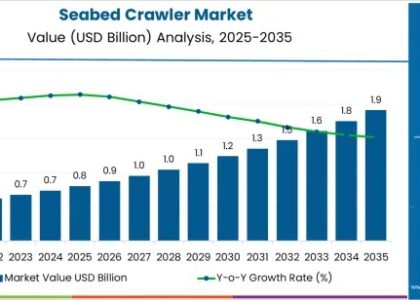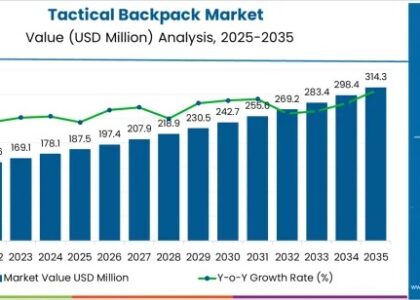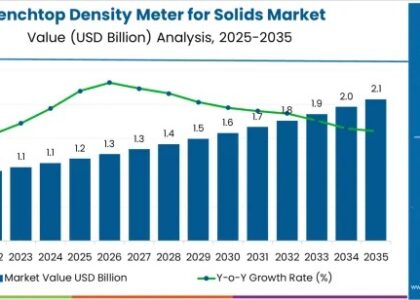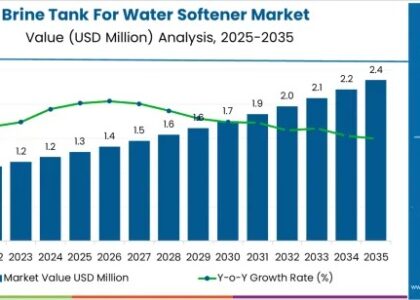The wearable sensor market is poised to cross US$ 1.6 billion in 2024 and is likely to attain a valuation of US$ 11 billion by 2034. The wearable sensor market size is projected to thrive at a staggering CAGR of 21.1% from 2024 to 2034.
The increased need for remote patient monitoring systems in the healthcare sector provides providers of wearable sensors with opportunities. These firms are establishing themselves as key participants in the rapidly expanding telehealth sector by incorporating their sensors into medical-grade devices that are authorized for remote usage. These wearables simplify healthcare delivery, lower hospital readmission rates, and save healthcare expenses by enabling healthcare practitioners to monitor patients’ vital signs and chronic illnesses remotely. In the quickly changing field of digital health, this strategic alignment with healthcare providers improves their market position and creates profitable prospects.
Request for a Sample of this Research Report
Manufacturers are adding Biometric authentication features to wearable sensor devices to improve user convenience and security. These businesses give consumers safe access to gadgets and confidential information by utilizing cutting-edge biometric technology like voice authentication, fingerprint recognition, and ECG-based identification. Their goods gain value from this strategic distinction, improving consumer loyalty and brand reputation. Wearables with strong biometric authentication capabilities are set to dominate the market and fetch high prices as safety concerns in an increasingly linked world continue to rise.
To solve the battery life issue of wearable gadgets, wearable sensor manufacturers are investing in energy harvesting technology. These businesses are increasing device runtime and improving user experience using solar cells, kinetic energy harvesting, and other renewable energy sources. This calculated emphasis on energy harvesting lessens the need for conventional batteries and supports environmental and sustainability objectives. Wearable sensor companies can gain a competitive advantage and attract environmentally concerned customers by providing wearables with eco-friendly features and longer battery lives.
Key Takeaways from the Wearable Sensor Market Report
- The global wearable sensor market size expanded at a 23.4% CAGR through 2034.
- The accelerometers segment is anticipated to rise at a 21.0% CAGR through 2034.
- The wristwear segment is predicted to expand at a 20.8% CAGR through 2034.
- The market size in the United States is projected to rise at a 21.6% CAGR through 2034.
- The market size in Japan is anticipated to develop at a 22.1% CAGR through 2034.
- The market size in the United Kingdom is estimated to surge at a 22.7% CAGR through 2034.
- The market size in South Korea is expected to increase at a 22.2% CAGR through 2034.
Competitive Landscape
The wearable sensor industry is intensely competitive, ruled by large firms like Apple and Samsung and disruptive newcomers. Competition expands beyond hardware to include whole ecosystems and strategic relationships. Data security is a top priority, and differentiators include personalization, design, and increasing functions beyond fitness tracking. Acquisitions and mergers aid in market consolidation as firms seek to strengthen their positions in this dynamic and continually changing industry.
Recent Developments
- In January 2024, Bosch Sensortec launched the BMA530 and BMA580, the world’s smallest MEMS accelerometers. Both devices have built-in features, making them easy to design. BMA530 employs a step counter to track activities and is best suited for wearables, whereas BMA580 detects voice activity.
- In November 2023, DuPont Liveo Healthcare Solutions partnered with STMicroelectronics, a worldwide semiconductor technology leader, to develop a smart wearable device for remote biosignal monitoring.
Key Coverage in the Wearable Sensor Market Report
- Adjacent Study on the Smart Wearable Fitness Devices Sensors Market, Wearable Patient Sensor Market, Wearable Inertial Sensors Market, and the Military Wearable Sensors Market
- Sales Analysis of the North America Wearable Sensor Market
- Future Market Trends and Opportunities for Wearable Sensor Technology
- Demand Analysis of Wearable Body Sensors Market
Wearable Sensor Market Segmentation
By Type:
- Accelerometers
- Magnetometers
- Gyroscopes
- Inertial Sensors
- Motion Sensors
- Pressure and Force Sensors
- Temperature and Humidity Sensors
- Microphones & Micro Speakers
- Medical- Based Sensors
- Image Sensors
- Touch Sensors
- Others
By Application:
- Wristwear
- Eyewear
- Footwear
- Neckwear
- Bodywear
- Others
By Vertical:
- Consumer
- Healthcare
- Industrial
- Other Verticals
By Region:
- North America
- Latin Americaa
- Western Europe
- Eastern Europe
- Asia Pacific (APAC)
- Middle East & Africa (MEA)
- Japan
Click to Buy Your Exclusive Report Immediately!
About Future Market Insights (FMI)
Future Market Insights, Inc. (ESOMAR certified, recipient of the Stevie Award, and a member of the Greater New York Chamber of Commerce) offers profound insights into the driving factors that are boosting demand in the market. FMI stands as the leading global provider of market intelligence, advisory services, consulting, and events for the Packaging, Food and Beverage, Consumer Technology, Healthcare, Industrial, and Chemicals markets. With a vast team of over 400 analysts worldwide, FMI provides global, regional, and local expertise on diverse domains and industry trends across more than 110 countries.
Contact Us:
Future Market Insights Inc.
Christiana Corporate, 200 Continental Drive,
Suite 401, Newark, Delaware – 19713, USA
T: +1-845-579-5705
For Sales Enquiries: sales@futuremarketinsights.com
Website: https://www.futuremarketinsights.com
LinkedIn| Twitter| Blogs | YouTube





